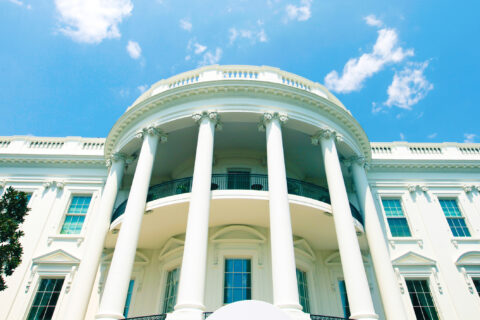On June 14, the Internal Revenue Service (IRS) released proposed regulations for elective pay, previously referred to as “direct pay,” a provision of the Inflation Reduction Act (IRA). These proposed regulations provide tax-exempt entities such as municipalities the ability to monetize clean energy tax credits they would not otherwise be able to use because of their status as a tax-exempt entities. If a tax-exempt entity places a project in service that utilizes a clean energy credit from IRA, they will get refunded for the full amount of the credit by filing a tax form with the IRS.
Municipalities looking to take advantage of the elective pay provision have been waiting for these proposed regulations from the IRS to begin planning their clean energy projects. It is important to note that the regulations are not final – the IRS is accepting public comments through August 14, 2023. It is possible the final regulations could be out by the end of the year.
Below, we detail the four most important things local leaders need to know about these proposed regulations.
What are the steps to make a successful elective payment election?
There are several steps to making a successful elective payment election. Not all steps need to occur in the order displayed below.
- Identify and pursue the qualifying project or activity. You will need to know what applicable credit you intend to earn and use elective pay for. This NLC blog provides an overview of the clean energy investment and production tax credits eligible under elective pay and some project examples.
- Determine your tax year, if not already known. Your tax year will determine the due date for your tax return.
- Complete pre-filing registration with the IRS. This includes providing information about your municipality, which applicable credits your municipality intends to earn and each eligible project/property that will contribute to the applicable credit, among other information . Upon completing this process, the IRS will provide you with a registration number for each applicable credit property. Your municipality will need to provide that registration number on its tax return as part of making the elective pay election. Please note, you must complete pre-filing registration in sufficient time to have a valid registration number at the time you file your tax return.
- Satisfy all eligibility requirements for the tax credit and any applicable bonus credits, if applicable, for a given tax year. For example, to claim an energy credit on a solar energy generating project, you would need to place the project in service before making an elective payment election. You will need the documentation necessary to properly substantiate any underlying tax credit, including if bonus amounts increased the credit. See additional links below for further guidance related to bonus credits.
- File a timely return.
How do I make an election to receive an elective payment from the federal government?
A municipality will make an election on its annual tax return. Municipalities do not typically file tax returns because they are tax-exempt entities but will need to in order to receive payment. The IRS will prescribe how the return is to be filed, along with what relevant forms will be needed and other additional information, including supporting calculations. This is a multi-step process as outlined above and requires completing the pre-filing registration process. Additional information and forms will be available from the IRS at a later date.
When is the tax form due and is there a deadline for claiming elective pay?
An elective pay election may only be made on the original tax return (including extensions). Elections are not allowed on amended returns and there is no relief under the Procedure of Administrative Regulations for an elective payment not filed timely. This means the deadline is the due date (including extensions of time) for the tax return for the taxable year for which the election is made. For most tax exempt and government entities, this is generally 4.5 months after the end of the entity’s tax year.
What is the effect of choosing to make an elective payment election?
A municipality that makes an election is treated as having made a payment against federal income taxes for the taxable year with respect to which an applicable credit was determined, in the amount of such credit. Since a municipality has no tax liability, the municipality will receive a refund equal to the full amount of the applicable credit.
Additional Resources
The IRS has a number of resources available to local leaders, including FAQs and fact sheets that outline key information contained in the proposed guidance.
The IRS Inflation Reduction Act website includes links to the guidance documents for the bonus credit considerations under elective pay, including prevailing wage and apprenticeship, domestic content, low-income communities and energy communities.
The IRS will hold a stakeholder briefing on the proposed guidance for elective pay on Thursday, June 29 at 3 pm ET/12 pm PT.
NLC continues to review the proposed guidance. Local leaders should be on the lookout for additional resources.






